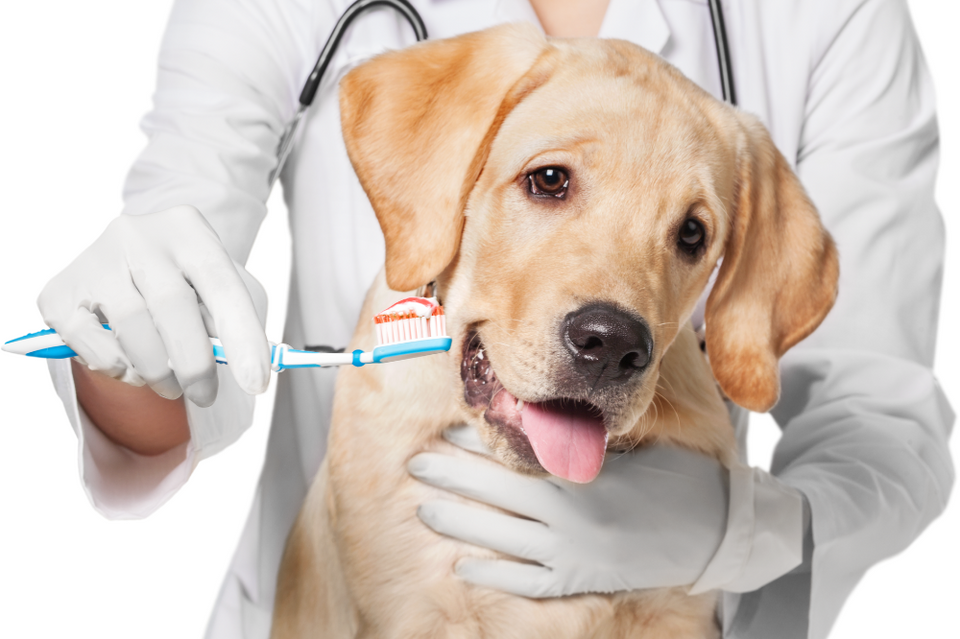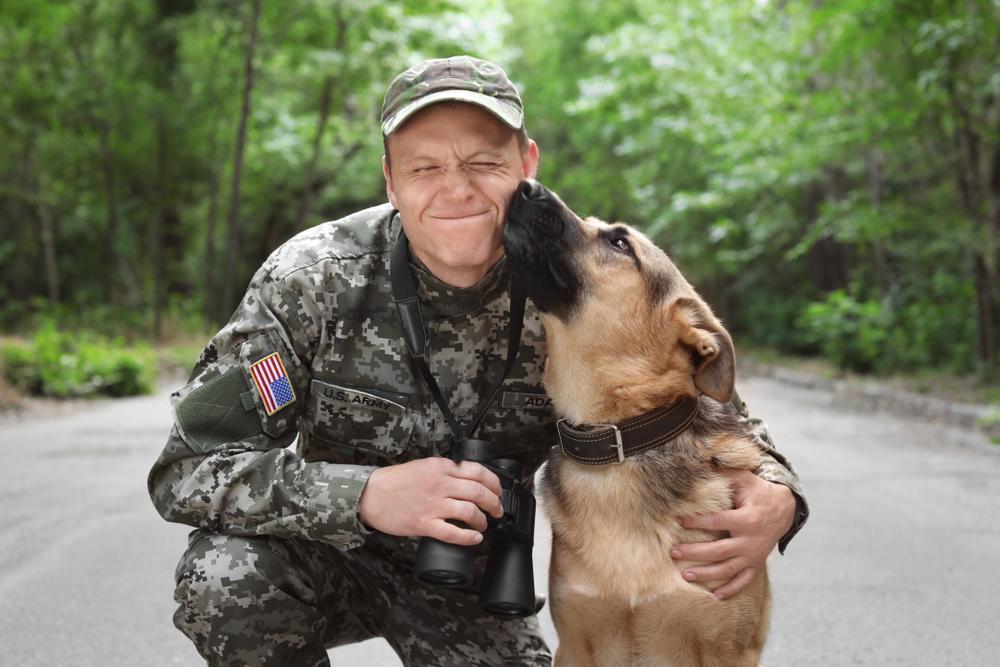
How to Keep Your Fur Bud's Teeth in Top Shape

February is National Pet Dental Health Month, and a good reminder to pet parents to take their dogs and cats to the vet for an exam or professional dental cleaning.
Of course, you should also be brushing your pet’s teeth at least twice a day if possible, but not less than three times a week. Not only is a good dental care routine a bonding opportunity, but it’s a great time to check for any dental problems your furry friend may have. They can have many of the same issues that humans do, although there are some unique to their species.
For one thing, dogs just have more teeth than humans — 42 for them vs. 32 for us. Their front teeth are also pointed and sharper and, of course, they have two pairs of prominent fangs at the front of their muzzles.
Cats have fewer teeth — they start with 26 “baby” teeth and end up with 30 as adults — but they are all also pointier and sharper than ours, especially since cats are obligate carnivores. Although they do have molars, which dogs and humans use for both chewing and grinding things like vegetables and plants, cat molars lack the grinding surfaces and are primarily used for chewing up meat once it’s been shredded by their other teeth.
Maintaining dog teeth

Most of the dental conditions dogs can experience also happen in humans, although some are rarer than people in others. One condition common in dogs but less common in people is gingival hyperplasia, which simply means an overgrowth of the gums.
They can thicken and completely cover the teeth, making cleaning and eating more difficult. It is most often due to inflammation, easily treated but also caused by certain drugs, in which case your vet can determine the best way to cut down and eliminate the medication to cure the condition.
If it’s caused by medication, then the overgrowth will subside. Unfortunately, if it was due to inflammation, then the only recourse after that’s dealt with is the surgical removal of the excess tissue.
Some breeds are more susceptible to this condition, including boxers, Great Danes, mastiffs, bulldogs, and collies.
Periodontal disease afflicts both dogs and humans alike, and it can lead to tooth loss, abscesses, and even heart disease. This is why regular cleanings and check-ups are so important for your pets.
This condition is much more common in smaller dog breeds since they have to fit those same 42 teeth into much smaller mouths. This leads to crowded teeth which can lead to plaque buildup and tartar.
Breeds prone to this condition are Chihuahuas, greyhounds, pugs, English Bulldogs, Boston Terriers, Shih Tzus, and Brussels Griffons.
Dogs can also suffer from orthodontic issues, just like humans, with some of the more common forms being a canine overbite, in which the lower jaw is shorter than the upper jaw so that the top teeth close in front of the bottom teeth. This is preventable if treated while the dog is a puppy, but dogs will still require treatment as adults to avoid tooth wear and soft tissue trauma.
This condition commonly affects collies, as well as dachshunds and Shetland sheepdogs (Shelties).
Persistent deciduous teeth, which also affects humans but is rarer, is a condition in which an animal or person fails to lose all of their baby teeth even after their grown-up teeth come in. This results in two teeth trying to take up the same spot, and often results in the adult tooth being forced to grow out in the wrong direction.
The condition can also lead to difficult-to-clean gaps between the two teeth, parallel to the jawline, allowing plaque and tartar to build up.
Since an adult dog has 50 percent more teeth than an infant, any extras that decide to hang around can cause serious problems. Breeds particularly prone to it often fall into the toy category: Chihuahuas, Yorkies, Maltese, and toy poodles.
Maintaining cat teeth

We know - brushing a cat’s teeth is not too easy of a task! Do what you can to remove plaque and tartar, as much as your fur bud will allow.
If your cat is having a hard time acclimating to a teeth cleaning routine, consider the use of cat dental treats. These treats can help to remove buildup and freshen breath as they chew.
While dental problems are the most common issue seen by veterinarians in cats and they are the same ones that dogs and people have, there tend to be fewer breed-specific issues with one general exception.
The one commonality seems to be that purebred cats are much more susceptible to all manner of feline dental health issues. These include breeds like the Persian, Maine coon, Burmese, and Siamese.
Healthy mouth, happy and healthy pet
As with humans, dental disease can affect overall health in general, especially the heart, kidneys, liver, and joints. If you love your fur babies, take good care of their teeth and gums. They’ll return the favor by living a long and healthy life — and giving you kisses with a non-stinky mouth!
Share this article
written by

